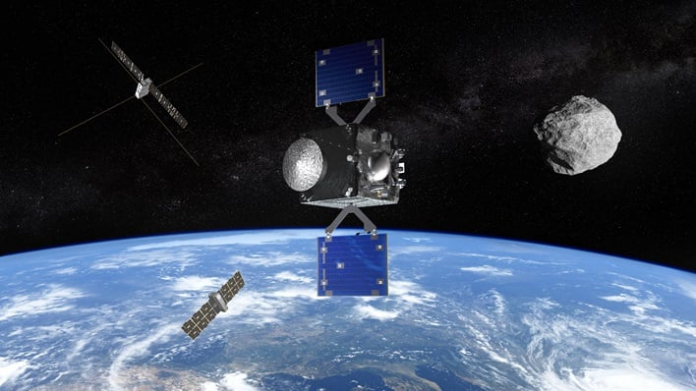The European Space Agency is preparing to rendezvous with an asteroid that is “about the size of a cruise liner” as it makes an exceptionally close flyby of Earth in 2029. Researchers will use the Rapid Apophis Mission for Space Safety (Ramses) to study the asteroid as Earth’s gravity alters its physical characteristics.Asteroid 99942, also known as Apophis (or God of Chaos), is about 375 meters across, and will pass within 32,000 kilometers of Earth on April 13, 2029. It will be close enough to Earth that it will be visible to the naked eye in clear, dark skies in areas of Europe, Africa, and parts of Asia. While it is not expected to impact Earth for at least another 100 years (doesn’t that just give you warm fuzzies?), the close flyby presents a rare opportunity for researchers to gather data otherwise unobtainable.“There is still so much we have yet to learn about asteroids but, until now, we have had to travel deep into the Solar System to study them and perform experiments ourselves to interact with their surface,” explained Patrick Michel Director of Research at CNRS in Nice.“For the first time ever, nature is bringing one to us and conducting the experiment itself. All we need to do is watch as Apophis is stretched and squeezed by strong tidal forces that may trigger landslides and other disturbances and reveal new material from beneath the surface,” remarked Michel.The plan is to have the Ramses spacecraft meet up with Apophis before it passes Earth, and then accompany the asteroid throughout the flyby in order to observe how it is warped and changed by Earth’s gravity, according to the ESA. The space agency will need to launch Ramses in April 2028 in order to meet Apophis in February 2029, two months prior to the close approach.Once Ramses makes its rendezvous with the asteroid, it will use a suite of scientific instruments to conduct a before-and-after survey of the asteroid’s shape, surface, orbit, rotation, and orientation. Researchers are hopeful the data they glean from the mission will provide more insight into how an asteroid reacts to external forces, as well as asteroid composition, internal structure, cohesion, mass, density, and porosity.Another large part of the mission will be to better understand how to alter the direction of an asteroid that is on a collision course with Earth. NASA’s DART (Double Asteroid Redirection Test) was the first-ever mission dedicated to showing one method of asteroid deflection by changing an asteroid’s motion through space. Hopefully, between Ramses and DART, humans on Earth will be prepared to protect themselves once a large asteroid does set its sights on us.
Recent Comments
on Dubai International Airport sees 41.6 million passengers in first half of year, more than in 2019
on Devout athletes find strength in their faith. But practicing it and elite sports can pose hurdles
on Despite strong Lunar New Year holiday data, consumer spending in China isn’t roaring back just yet
on Dave Portnoy: Taylor Swift’s security should ‘drag Kim Kardashian to jail’ if she attends Eras Tour
on CONCEPT ART: New Details Revealed for Disney Cruise Line Lookout Cay at Lighthouse Point Destination
on “Completely Knocked Me Out”: Rob Lowe Recalls Boxing Match With Tom Cruise On 1983 Brat Pack Classic
on CBS Sports, Serie A announce new TV rights deal; Paramount+ to air over 400 Italian soccer matches
on Cam Newton’s Violent Public Incident Draws Hilarious Reaction From 3x All-Star: “Where Do I Sign Up
on Boston College vs. Army live stream, how to watch online, CBS Sports Network channel finder, odds
on Angel Reese Launches Foundation Dedicated To Empowering Women Through Sports & Financial Literacy
on A weaker dollar, skyrocketing prices and ‘record’ visitor numbers: Good luck in Europe this summer




